High PH in my Pond
Help! I just tested the pond water and the PH (on my chart) is very dark blue or in the 9's. Nitrates levels are perfect. Amonia levels are perfect. I've had an algae bloom and have been working on removing this for 2 weeks using quilt batting and rinsing it off every night. Its still murky. I have a bio filter and waterfall filter with mats in both places. I did a small water change last week. Approx 3000 gallons with 30 - 4" goldfish and frogs. The fish do not appear to be stressed. Alot of hyachinths covering about 1/3 of the pond along with lilies. HOW DO I FIX THIS! (forgive me if I don't look at this right away as they block these sites at work and I'm gone 14 hrs a day)
thanks, Jeannie
Comments (35)
drh1
13 years agoJust for the heck of it check your pH early in the morning. You didn't say but I suspect you're checking the pH late in the afternoon/early evening. Here's what I THINK may be happening: the algae in your pond are knocking the pH around. During the daylight hours the algae consumes all the carbon dioxide it can ... this drives the pH up (I've seen ponds where the pH has hit as high as 9.5 during the afternoon). But at night - no sunlight - the algae are net producers of carbon dioxide along with whatever the fish, microbes and everybody else in the pond is doing ... this causes the pH to drop maybe as low as 7-7.5 or so, maybe even a bit lower. IF this is the case then there are several things you need to do: a.) check your alkalinity. Adjust it with baking soda until it is at least 80 mg/L or higher. b.) continue to work on getting your algae under control - more on this later. On the otherhand if your pH is very high morning AND night then you may have other issues. Let us know what your morning and evening pH readings are as well as the alkalinity. Also, are you using pH strips or are you using some other method for testing for pH? (The strips can give erroneous readings).
---Davidsharon_greenacre
13 years agoI have definitely made a mistake by playing hooky from this forum. I had a vague idea that CO2 was acidic, but never realized about algae and the pH swings. Way cool tidbit of practical water chemistry, David.
BTW, Jeannie, I used to have lots of "pea soup" algae, but since I began to keep a ridiculously big bag of barley straw in my pond (way more than they normally recommend), I can pretty much always see bottom.
There's lots of skepticism about barley straw, but if it's snake oil I'm still sold on it. I know of a web site that sells big quantities affordably, if anyone is interested. Oh what the heck, here's the link:
Related Professionals
Simpsonville Landscape Architects & Landscape Designers · La Marque Landscape Architects & Landscape Designers · Panama City Landscape Architects & Landscape Designers · Rancho Cordova Landscape Architects & Landscape Designers · Garden City Landscape Architects & Landscape Designers · Harvey Landscape Architects & Landscape Designers · Bell Gardens Landscape Contractors · Cerritos Landscape Contractors · Emmaus Landscape Contractors · Forest Hills Landscape Contractors · Gaithersburg Landscape Contractors · Plainview Landscape Contractors · Pleasant Hill Landscape Contractors · Rio Linda Landscape Contractors · Southbury Landscape Contractorssharon_greenacre
13 years agoI meant to say I keep the barley straw in my Skippy biofilter. That way I don't have to look at it.
sharon_greenacre
13 years agoUm, I mean that this is true when I have a pond. Right now thanks to the muskrat(s) I have a huge hole in my back yard and an 8' kiddie pool full of goldfish.
:^(
mondotomhead
Original Author13 years agoDrhl: To test I am using a test kit with test-tubes and "drops". I feel like a chemist! Yes, I tested about 7pm last night. I read what you said about am-pm test and just ran outside to get a sample and the test is showing 7.5 ph. now. I feel so much better. Thanks so much!
Sharon: I think a trip to the pond store for barley straw is in my future - like lunchtime!
drh1
13 years agoThe test tube/drop kits are much better than the strips. I've tested both against the "gold standard" ... big problem with the strips is how fast they go bad and you have no way of knowing.
While you are out shopping don't forget to pick up your bag of baking soda! Arm & Hammer is your friend!!!! :-)) I use both Baking soda and barley straw - I consider both to be "do no harm" approaches, meaning you it is difficult to overdose and there's very little downside with either one. However, I am a bit skeptical than Sharon about the benefits of barley straw simply because there is not a well defined mechanism that tells how it works and because the true studies (as opposed to anecdotal information) have shown very mixed results. But I put it in since I'm an optimist!!!
You mentioned you've got water hyacinths, lilies, etc. Another thing you can do is to help those plants "suck away" the phosphorous available to the algae. The way I do this is add a bit of "stump remover" - which, in our area, is nothing more than potassium nitrate. But make sure it is potassium nitrate and not something else. For your size pond you'd only need about 1 to 1.5 tablespoons approximately once a week for a few weeks. This approach supplies growth nutrients without supplying phosphorous with the result my water hyacinths are growing very rapidly (I'm tossing about 1-3 5 gallon buckets away every week) but no algae to speak of. I've also added daphnia (algae predators) to help deal with the green monster! The result is water which has been very clear even this summer with all the heat we've had.
Also, watch your goldfish numbers - if you check some of the postings here you'll see they tend to breed...and often!!!! Thinning the ranks may become an issue for you.
Hope all this helps.
---Davidmondotomhead
Original Author13 years agoWell, here I finally am. Drhl, you mentioned baking soda. I always have that as I bake alot. How much would you put in a 3000 gallon pond? When I go to the pond supply store for new mats I'll be looking for that stump remover too.
thanks all for helping me with this.......... jeannie
drh1
13 years agoKalevi, I apologize - I made the assumption that everyone knows that baking soda is, in fact, sodium bicarbonate. For all practical purposes that box of Arm & Hammer that you may (or may not) have on your shelf can be considered to be 99+% pure sodium bicarbonate. It is one of the best ways for increasing alkalinity for several reasons: a.) It's relatively cheap as things go these days. b.) Unlike soda ash (sodium carbonate) it is essentially impossible to raise the pH beyond 8.3 - so overdosing is a non issue. I'm happy to discuss the chemistry with anyone who wishes but I've found over the years that getting into the "nitty-gritty" has a rather high eye-glossing effect! :-)) c.) It goes into solution very rapidly, even in cold temperatures. Unlike calcium carbonate dissolution, sodium bicarb can immediately correct a low alkalinity problem. Solid calcium carbonate may offer a way to help stabilize alkalinity and will slowly release both a calcium and a carbonate ion as pointed out in your pdf document. However the rate of release is very much dependent on the underlying crystal structure of calcium carbonate solid as well as the water temperature. Amorphous calcium carbonate - as in Plaster of Paris - tends to dissolve faster than say crystalline calcium carbonate in the form of calcite.
One other item of note: some folks use the term "buffering capacity" and "alkalinity" interchangeably. I try to be careful about that since they are not exactly the same; specifically, alkalinity is the buffering capacity or ability to limit a DOWNWARD change in pH. I'm happy to discuss that in more detail if anyone wishes.
Sorry for the confusion.
---Daviddrh1
13 years agoHi Jeannie,
I must have posted the previous one right over the top of yours. Sorry about that! To answer your question about how much baking soda (aka, sodium bicarbonate) to add: you want to bring the total alkalinity above 80 mg/L or so. You will need an alkalinity test kit (you didn't mention whether or not you had one - and again, get one that uses drops). First, test you alkalinity levels. If you are at or above 80 (approximately 6 drops with most kits but verify this for yours) then you don't need to do anything. If you are doing this in the afternoon (hence your pH is already high) you can dump in a cup to two cups. I usually pre-dissolve it and slosh it around the pond or you can dump the powder right into your waterfall - I'm assuming you have one - and let the water mix and disperse it. Wait about an hour or two or even til the next morning then recheck your alkalinity levels. Add more if you need to.
I keep a 10 pound bag of the stuff on hand (Costco's finest Arm & Hammer!!).As to stump remover? You won't find that in your pond store. You will find it in a hardware store or in a gardening store. If you have an Agway near you they should have it. Just be sure to check to be sure it is potassium nitrate - they should be able to provide you with a Material Safety Data Sheet if in doubt. You do want to pre-dissolve that stuff before you spread it around the pond or pour it into the inlet side of you skimmer or pump.
---Davidjalal
13 years agoHi David and others. Just a question. Isn't messing with the ph in the pond a tricky business? With Jeannie's working hours how is she going to monitor the levels? I'm wondering if she needs to add aeration especially at night when the algae is maybe causing the oxygen levels to drop and also ph crashes??
drh1
13 years agoActually she's not messing with the pH....she'll be stabilizing it by increasing the alkalinity. Adding aeration might help marginally; usually the amount of oxygen is not a factor in a pH crash but it might help strip carbon dioxide out of the system. Of course then the question is: how high will the pH go the next day when the sun comes up? Ultimately the solution to the problem is to reduce the amount of algae present. Increasing the alkalinity by adding baking soda is an easy and safe step for straightening out the problem with her pond.
---Davidccoombs1
13 years agoDavid is right on track...she is not messing with the pH. She is adjusting the alkalinity, which will correct the pH problems. Messing with the pH would be dumping acid in the pond, which is what the "lower your pH" products are. Adding acid is the worst thing you can do to lower a pH. It causes a rapid decrease in the pH which can lead to rapid fish death. Adding baking soda will gently lower the pH somewhat (from the 9.0 reading) but will also stabilize it.
kalevi
13 years agoAfter learning about baking soda, aka sodium bicarbonate, I have been using it regularly. I have a test kit. My pond is 1100 gallons. It is slightly above ground so rain tends to fill it and the excess flows over. I use a 1 pound box in the spring, once in june, and another one is october. The test kit shows my levels are in the safe zone. I do not have pH fluctuations because of the buffering from the baking soda. I also have a couple of limestone rocks in the pond to provide calcium into the water which the fish, snails, and plants need to grow properly.
mondotomhead
Original Author13 years agoI did a small water change this afternoon as the algae is worse. This did nothing at all. I think it may be because of the 5 days of hot weather we've had. I'm actually looking forward to this hurricane so I can get some natural water. I'm going to try "Horton's" method of pumping the pond water through quilt batting that's been put in a barrel with holes at the bottom so the water can flow back in the pond. That batting really does catch alot of the algae as I use sheets of it in the skimmer. There's just so much algae I would have to clean off the skimmer 3-4 times a day to keep up with it.
I just am not sure about using baking soda or any kind of chemicals. I'm so afraid of screwing it up and killing my fishies (and frogs). I know I just have to be patient or that's what I've read. Ugh!
jeannie
drh1
13 years agoJeanie, baking soda is probably the one chemical that you can add to a pond without fear of it doing anything to the fish/frogs/plants. You can add 1 cup, 2 cups, 10 cups with no impact on anything in your pond. There will be only two things that happen: 1.) the alkalinity will increase. This (increasing alkalinity) is a good thing since you are experiencing significant pH fluctuations. If your alkalinity is low (you'll have to measure this) then to not do so will put your fish at risk for a pH crash. 2.) As I mentioned above, adding baking soda will also increase the salinity or in other words, the total ion concentration in your pond. This is not detrimental as long as you stay below approximately 0.1% but to get to this level you would need to add approximately 30 or more pounds of baking soda and no one is suggesting any such levels. As pointed out in the document kalevi nicely appended to the post folks with koi use baking soda - and these folks would NOT do anything to endanger their fish! I'm not sure you really want to wait for Mother Nature to "solve the problem" in this case since I'm fairly certain you may not like the solution.
---Davidjalal
13 years agoThanks guys for the clarification. I've always stayed away from the ph up/ph down products in the pet stores. I lump them in the same category as algae killers sold by some companies. Very good info as always David.
fishguru2u
13 years agoDavid's right. Buffering your pond will keep your pH from swingin around too wildly. But I always tell people (I own a pond store) not to get too hung up on pH. It seems that people read about "perfect pH" being 7.0 and they spend $$$$ on pH up/down chemicals trying to achieve that "perfect" pH reading.
A pond's pH will naturally go up and down over 24 hours and the fish handle it just fine. I tell people that your fish will let you know when something is not right in your pond.
Yes, test your water on a regular basis (and make sure your water test kit is not old), but don't get too bent out of shape on pH. I'm actually more worried when a pond's pH drops too low!
Best of luck with your pond!
pondbucket
13 years agofishguru2u, David (drhl),
The test kits, the ones sold that are essentially the complete battery of water tests... how long will they last, and, would summertime heat if left outside (but out of direct sun) cause bogus results?
I've never understood the answer to these questions!
Any insight would be much appreciated.
drh1
13 years agoThe complete kits such as Tetra and others should last a year and maybe a bit more. I've had good results with the alkalinity and pH kits for up to two years (but I also checked them!). Not so sure about the nitrite/ammonia/nitrate kits but I'd say a year just to be on the safe side. Left them outside? Join the group. It doesn't help them but the occassional slip-up shouldn't do them in immediately. Leaving them in the direct sunlight might cook the indicators in the solutions as well as mess up the reagents specially for ammonia and nitrate. The alkalinity reagent shouldn't matter too much but still not a good idea.
---DavidWendyBoyce
10 years agoI feel rather stupid...I have read so many things on the internet and it just makes me feel more lost. What exactly do I need to be testing? I tested the PH, it showed high but it was late afternoon, so testing again in the morning. I tested ammonia, said it was safe but apparently I did the wrong thing and bought strips...what else do I need to test. I just had my first fish die, it had pine-cone disease. I've had them a year...broke my heart even though everyone laughs at me for being so upset. I need to make sure it's not my water so the others don't get ill. Also, I have 13 fish, various pretty types of goldfish...in a waterfall, filter etc...the water was very green and I didn't want to use chemicals so put in barley straw. Just less than a month and the water is very clear, so it is true, the stuff is magical. Also, I watched during spawning recently and it was brutal. I had to rescue poor Francie from being stuck in between rocks by the force of the males twice. How do I know males from females and how many males per females is safe...or is it ever...darn bullies! ONE last question and I do apologize for my total lack of knowledge. Honestly the fish were gifts and I just never gave them any thought until one was ill. Trying to correct that now...l have seen a dozen or so tiny fish around the plants. Do I need to catch them and remove them or leave them be? I read a site that said all of them will be eaten by the adults and another said they will over-populate, leave them be. I don't mind a fish or two extra but I don't want to end up with too many. Thanks so much for the help.
Wendychas045
10 years agoStrips are often not as accurate, but they should still be fine for your needs. You didn't say what the 'high' pH actually was. It was probably ok. Any ammonia is too much. It would probably be better to start a new thread. You didn't mention the size of your pond!!
jamesg44
10 years agoI am wondering if David or anyone could further explain why adding sodium bicarbonate as a buffer solves ph swings? I wanted to contact David about this but can find no way to do so, maybe someone can help. I have a 16,000 gallon pond and my ph doesn't swing much, just stays high . If left alone, I have seen it up to 11 in the summer. It seems to stay about 9 unless I use "neutral regulator" by seachem, but you have to keep putting it in. I now have high phosphates, ph of about 8.5 and I cannot understand it. There is some algae (green water, not string) and a lot of biological and mechanical filtration. The mystery is, I filled the entire pond with RO water that has a tds of 8-15, but it just shoots right up in the ph. I have plenty of buffering, but something seems to overcome it. I have also tried "discus buffer" which is supposed to regulate to 6.8 ph, but ph is always high. With ro water, how can this happen (even with days of putting it into my lined pond (no concrete sources in there at all) and even when it was new and before algae was even growing it shot right up to 9, any help would be appreciated. My current GH is 9, kh is 7, ph 8.5 to 9, temp is 54 f, ammonia is 0, copper is 0, nitrates 0, phosphates are a 10.
chas045
10 years agoYou really should have created a new thread But I have found a link below that might help. Unfortunately, David has not been around for a long time. I was surprised to hear from him in this post as he had already been inactive for awhile.
The short answer is that buffers are like sponges and can sop up comparatively large quantities of either an added acid (H+) or a base (OH-).
A pH of 9 is no problem and a pH of 11 seems unlikely. I would suspect failure of your testing equipment.
Here is a link that might be useful: buffers
jamesg44
10 years agoFor the ph of 11, I verified it with a properly calibrated ph meter, so not sure but that is what it said, and then put it back into the calibration solution right after and it said 7.0 . So, it sounds like i should add sodium bicarbonate then?
chas045
10 years agoOK James; 'calibrated pH meter'. I would still feel better if you had a pH 10 standard (to check slope) besides just a 7 standard, but I admit that it is unlikely that a pH probe would be that far off. BTW, 16000 gallon pond is big. What IS this pond lined with?
I was a chemist for 30 years but was not dealing with most of our issues here. I had to read up on 'tds' (probably irrelevant). I have reread your post and realized that you must be incorrect about having plenty of buffering. If you did, then your pH would not change much. A change from 8 to 11 is huge. If you had only said RO water and nothing else, then all would be easily explained and you could have even wider pH changes with almost any additions of acids or bases. That's what lack of buffering is all about.
So, two points. If you have fish in your pond and they seem OK, then probably everything is fine in spite of all this analysis to the contrary. And yes, I think you can throw as much baking soda as you feel like in there. If you didn't throw a decimal point on us, and really have 16 thousand gallons, then you could get a COSTCO sized bag, but you could start small and just throw a grocery store size box in there.
jamesg44
10 years agoThanks for the help, and yes you must be right, there cannot be as much buffer in there as I think or else it wouldn't change easily at all. i never thought of that, but it has to be correct. The pond is 40 feet across, basically a circle that is up to 5 feet deep, and I was able to calculate the volume by figuring the amount of gallons per day my ro unit puts out, and keeping track of the number of days. The actual calculation is 16,500 gallons. The liner is the heavy black (i think polyethelyne? that is 35 mils) and has a 20 year warranty.
chas045
10 years agoI guess I should have looked you up jamesg44. I do recall someone (probably you) having a huge lined pond. "Now THAT's a pond". Considering the likely very low current buffering, even one little box of baking soda might do the trick and bring you right to a pH of 8.3. Or the COSTCO approach could be the way to go. I am imagining hearing the beep..beep..beep and escaping hydrolic brake air as a dump truck backs up to your pond. ;->
To decrease one variable and for low anxiety, you might want to measure in the mornings before plants start really respiring as things warm up. Later pH is usually higher as carbon dioxide is used or driven off and acidity therefore decreases.
chas045
10 years agoSorry Joecd et. al., it took me a little while to figure it out even though I have used it. Reverse Osmosis.
bob_nevin
10 years agoSince fish eat algae I wonder if it is a good idea to add any more nutrients to the pond, like fish food until the algae goes down.
Plants produce oxygen during the day which increases the ph but at night they produce carbon dioxide. Carbon dioxide in water produces the chemical carbonic acid that will take away your waters buffering. Baking soda is a buffer as David explained so well. If your buffering (KH) was low it could cause your fish to be highly stressed by wild swings in the PH causing pine cone disease. PH can also make a difference in the tolerance of ammonia levels which is also a stress factor.Hortons idea of removing some of the algae is a great idea, I think. Algae eats the ammonia in the water. If you then remove some of the algae you are also removing the nutrients it took to grow the algae. If the algae dies in the pond it then end up as a fertilizing nutrient for more algae.
As Horton says water hyacinths is good for removing nutrients from you pond but if it is too cold for the water hyacinths you should try watercress. You buy it from the grocery store put it in the pond where it will stay and it will grow roots. Watercress is my personal favorite for the spring and fall.

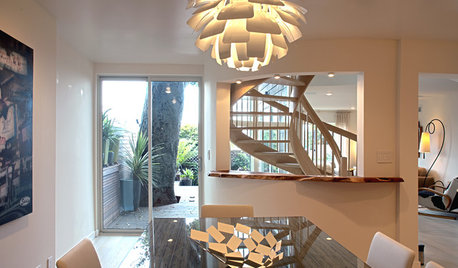

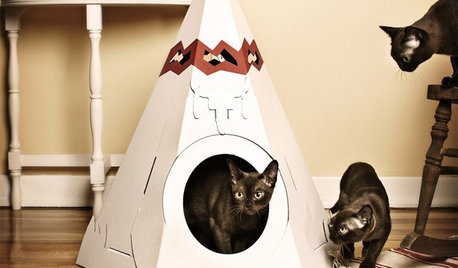
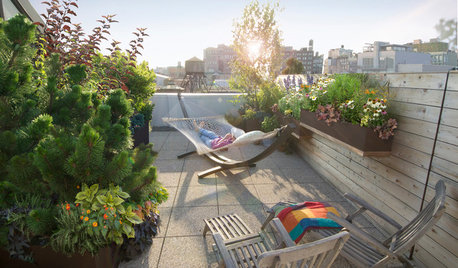
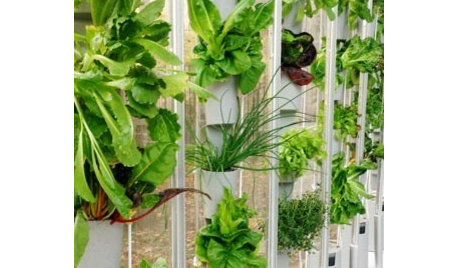
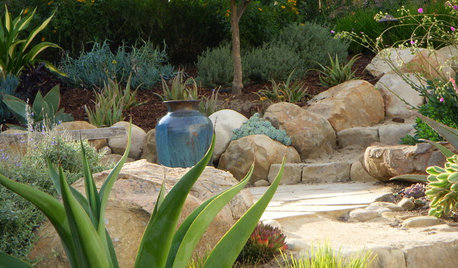
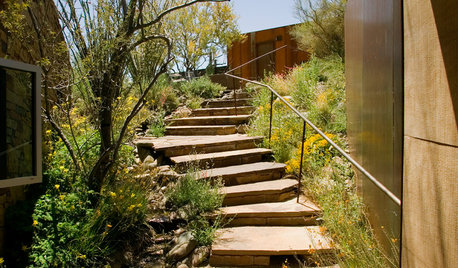
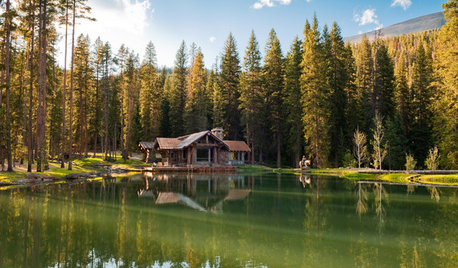








kalevi